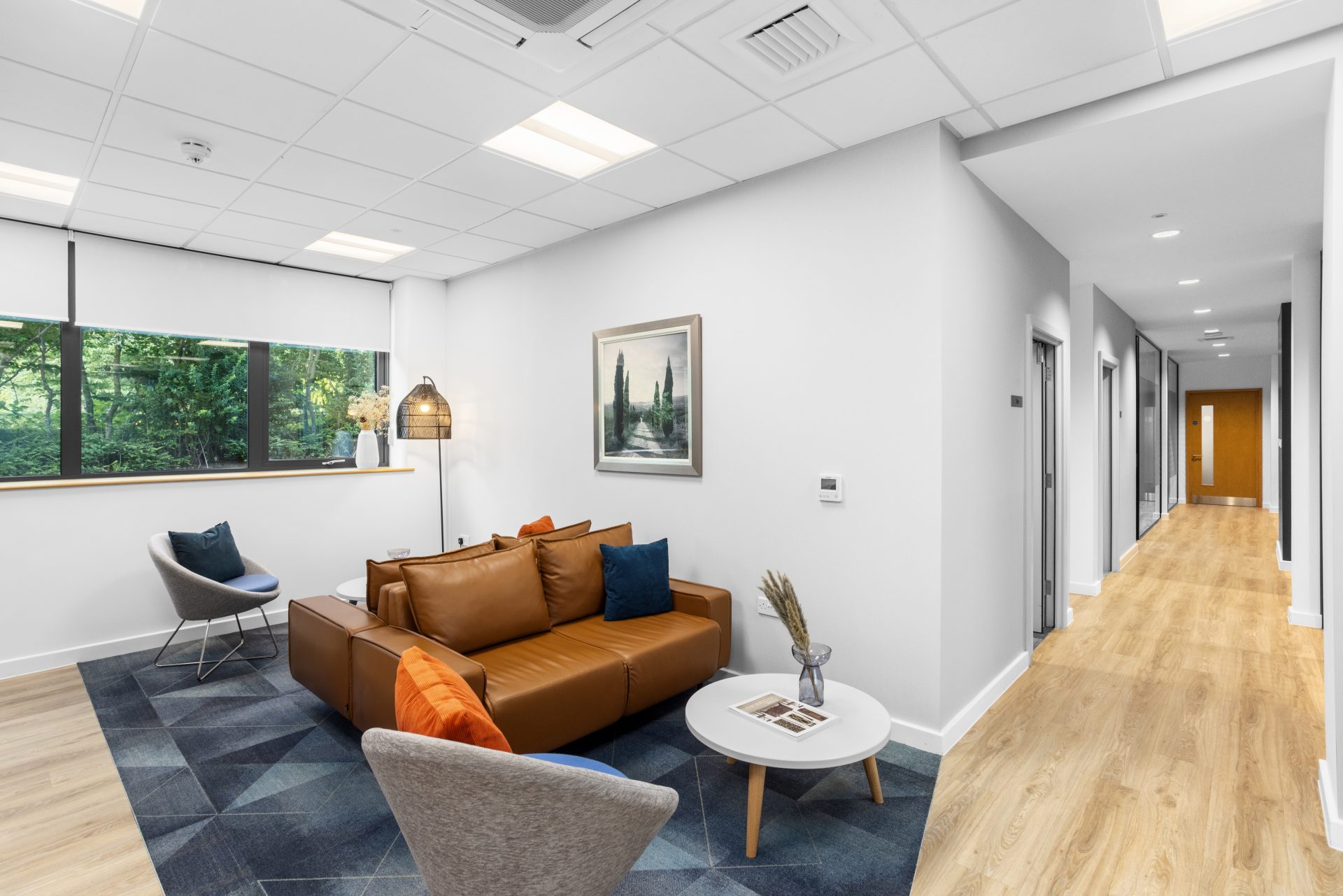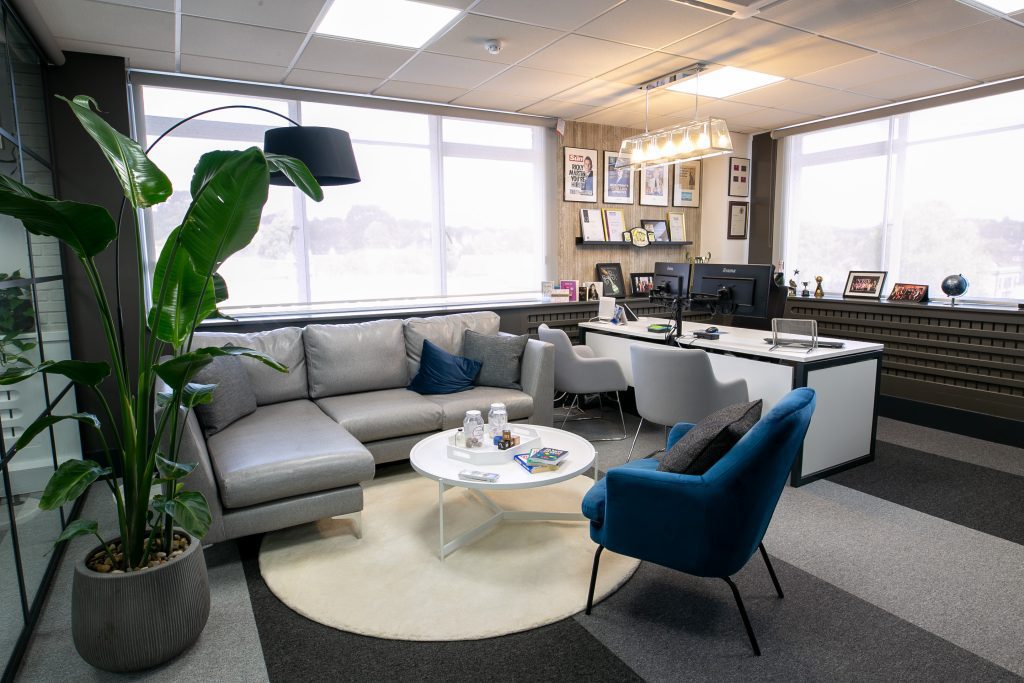Insights
Does Your Office Furniture and Design Make the Most of Your Floor Plan?

A common issue for many office spaces is a lack of focus on the right furniture and workspace design. When the furniture and layout is decided on without considering functionality, it can lead to cluttered and inefficient spaces. The right choices, however, can transform how your office operates, especially in smaller spaces, making your workplace more productive and inviting.
What’s the Objective of Your Office Space?

The first step is asking yourself “What do you want to achieve with your office space?” Some recent examples of how businesses have refocused their spaces are:
- Designing a layout that encourages collaboration between teams
- Delivering a focus on creating a welcoming environment for clients
- Be able to offer quiet zones for focused work
If you’re aiming for collaboration, your furniture should bring people together. Open, communal tables or modular seating can help create an environment where ideas flow freely. On the other hand, if focus and productivity are priorities, private workstations or office pods might be more suitable.
The overall idea here is that designing a space without focus is a waste of time. To achieve a goal, it must first be outlined.
Small Office Design Ideas

Smaller spaces are often the trickiest to furnish. The key is choosing office furniture that serves multiple purposes, and considering how clever design ideas can change the feel and function of the space. With some careful consideration they can soon feel spacious and practical.
Three easy options are modular or sleek furniture, usage of vertical space, and colour theory.
1. Choosing the Right Furniture for a Small Workspace
Consider modular desks that can be rearranged for meetings or shared workstations that can accommodate multiple people at once. Avoid bulky furniture that takes up too much room, and instead opt for sleeker designs.
2. Make Vertical Space Work for You
One of the biggest mistakes in small spaces is forgetting to use vertical space. Instead of relying solely on floor-level storage, think about how you can use the walls.
Tall shelves, wall-mounted cabinets, and pegboards can all help to free up valuable floor space while still offering plenty of storage. This is particularly useful in small offices where every square inch counts. Keeping the ground clear of clutter will make your space feel more open and organised.
3. How Light and Colour fit into Office Design
Optimising small spaces is not just about the physical layout. Light and colour usage can have quite a dramatic effect on how a workspace feels.
By positioning your office furniture near windows or using transparent partitions you’ll allow light flow throughout. There is so much research available for how natural light helps us perform, such as through our mood and focus. Natural light can help raise your energy, causing you to feel more focused and generally happier.
It’s clear to see this can raise the overall productivity of your employees and make them feel more content within their workspace. In areas where natural light is scarce, mirrors and light-coloured furniture can help to reflect what little light you have and make the space feel brighter and more open.
Colour theory can also transform how different spaces feel. In short, the following use of colour can influence certain emotions to optimise spaces such as:
- For quiet workspaces, use calmer tones
- If it’s a creative space, use bold, vibrant colours
- Light and neutral tones can create the feeling of more space, whereas dark tones will make spaces feel smaller
There’s a lot to consider how the light and colour of your office design can influence how your team feels and performs, and this is how you can alter the feel of a smaller space so that employees don’t feel cramped within them.
The Rise of Breakout Areas

Having designated breakout areas can be great for giving your employees a change of scenery and a space to meet. The great part about breakout areas is they don’t have to be bulky or take up a lot of space. A couple of comfortable chairs, a small table, or even built-in seating in unused corners can work wonders.
Breakout areas have become a go-to in recent office design due to the benefits of giving employees a place to recharge or collaborate informally without disrupting the rest of the office.
Creating Zones that Work for Your Team

A well-designed office understands that the space can often be categorised into different zones based on the team that would use the space. You don’t need large areas for each zone—just the right furniture that fits its purpose.
For example, open-plan zones can feature communal seating for collaboration, while quiet zones could use acoustic panels and single workstations for focus. These distinctions allow employees to move seamlessly between work styles depending on the task at hand, all while keeping the floor plan optimised.
Is Your Furniture Flexible Enough for Growth?

An often overlooked part of office design is scalability. As your business grows or your needs change, your office furniture should be able to grow with you.
Another benefit of using the prior mentioned modular furniture is that it offers flexibility. This allows you to easily rearrange and adapt the office layout without a full redesign. Desks, chairs, and even partitions that can move or expand will save both space and future headaches, ensuring that your floor plan remains effective no matter how your business evolves.
Ready to Rethink Your Office Space?
With so many possibilities of how your office can be improved, it really is a great option to seek some workplace consultancy to understand what your focus needs to be. It may be smarter use of office furniture, or perhaps the need for a change in your overall workplace design.
If your office space feels cluttered, disjointed, or simply isn’t working for your team, now is the time to rethink your layout. Contact us today and we can discuss what your workspace may be missing.
Got a project in mind?
Let’s create a plan to achieve your objectives.
Contact us today to learn more about our workplace design, space planning, office fit out services and how we can help you to unlock your office’s full potential.
Let’s create the space to do your best work.